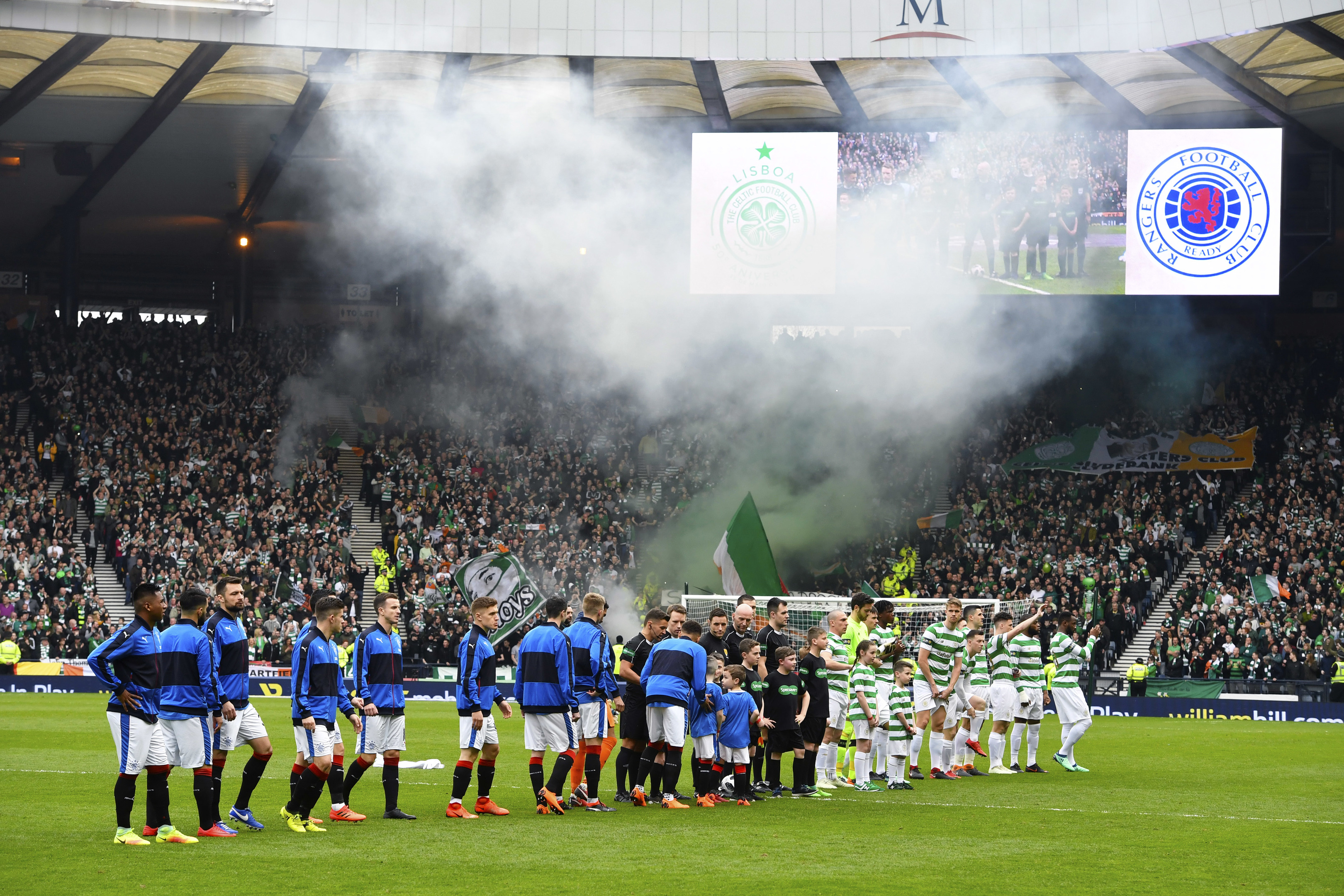
THE famous “Hampden Roar” lived up to its name during the recent Old Firm clash after sound experts said the noise generated by fans was the equivalent of a real lion.
Sound experts at the national stadium recorded an “incredible” 115 decibel (dB) peak during the showpiece Celtic v Rangers semi-final on Sunday.
Vanguardia say this is equivalent to the roar of a real lion from less than a metre away, the front row of a music concert or just short of a jet engine at take-off from 25 metres.
The true impact of the Hampden Roar was measured as part of a fact-finding mission by managers to safeguard the future of the Glasgow stadium.
Peter Dallas, managing director of Hampden Park, said: “Sunday’s William Hill Scottish Cup semi-final reaffirmed why Hampden Park is Scotland’s national stadium.
“The Celtic v Rangers tie was beamed to households across the globe but these readings show there is no substitute to experiencing the atmosphere inside the stadium.
“We are pleased that the experts at Vanguardia have validated our firm belief that the Hampden Roar is unrivalled in Scottish football.”
Celtic’s 4-0 victory over their rivals recorded crowd noise peaks as the teams emerged from the tunnel (109 dB) and immediately after each goal (115 dB).
The average ambient noise level in the first half was 98 dB and for the second half was 96 dB.
Recent measurements of all 20 English Premier League stadia pale by comparison.
A study in 2014 put Old Trafford top with a reading of 84 decibels at the start of the match, compared to Hampden’s 109 dB.
Matt McIlroy, senior acoustic consultant at Vanguardia, said: “The noise levels from the moment the players walked out on to the pitch were incredible and really shows the passion of the fans that those levels did not significantly change throughout the match.
“It’s also worth noting that these levels were registered trackside: imagine how loud it would have been in amongst the fans.”
The Guinness Book of World Records recognises 142.2 dB as the loudest noise ever recorded in a sports stadium, during a Kansas City Chiefs v New England Patriots American Football game at the Arrowhead Stadium, which holds 76,416 fans, in 2014.
The William Hill Scottish Cup Final between Celtic and Motherwell will be held at Hampden Park on May 19.

Enjoy the convenience of having The Sunday Post delivered as a digital ePaper straight to your smartphone, tablet or computer.
Subscribe for only £5.49 a month and enjoy all the benefits of the printed paper as a digital replica.
Subscribe